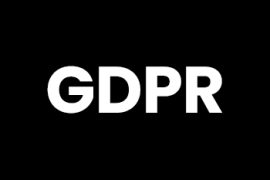Share This Article
Discover the different types of link and parameters to consider when link building. Learn how to determine which are the best types of links.
In a previous post, we explained the concept of link building and why it is so important for the organic positioning of your online store. Now, we will delve further into the different types of links that exist and the metrics to consider before investing time and effort in attempting to get any links.
Types of links: dofollow and nofollow links
The first thing to understand in order to differentiate link types is the difference between dofollow and nofollow links.
By default, a link is a way of establishing a direct relationship between two pages or domains. It is also a way of recommending the domain or page to which it is linked, and the search engines interpret it as if you were using your own reputation to endorse the destination site. These types of links are known as dofollow, but they remain the default links. The term “dofollow” is simply used to differentiate them from its antonym “nofollow”.
However, there are many cases in which the amount of traffic and links published on web sites is so large that webmasters cannot control them, preferring to shield themselves and use the “nofollow” tag. Simply put, we can say that this parameter allows the link to continue to exist, but it blocks the reputation transfer and stops acting as a recommendation or endorsement of the linked site. Let’s say that, although linking, it distances itself from the target domain.
Therefore, when looking for links that point to your website, you should consider that there are certain types of links that give more reputation or authority to your website and others that, although Google officially says they don’t, will still help you position yourself, but less. In any case, it is best to try to achieve a natural relationship between links, where the quantitative differences between one of the link types and another is not artificial or could be interpreted as such.
To differentiate between one type of link and another you just have to inspect the code of the page where the link is or will be inserted and look at the link line. If it contains the label rel=”nofollow”, it is a nofollow. If it does not have that label, it is dofollow.
This is what a dofollow and a nofollow link would look like in the code of your page:

Metrics to keep in mind: how do you know if a domain is good or bad?
Taking the definition of link into account, you will have already understood that it is not the same getting a link from a domain with a lot of authority and reputation as getting a link from a fledgling blog with one or two readers a year. It is always more important to be referenced by quality sites. But how do you know if a domain is good or bad? There are different metrics that measure authority, reputation and other factors that will help you understand how convenient it would be to place a link to your store from the domain in question. Here are some of the most relevant:
Domain Authority (DA) and Page Authority (PA)
This is a score between 1 and 100 showing the authority and relevance of a specific domain or page, taking into account a large number of factors, such as the number of links pointing to the domain, the quality of those links, the seniority of the website, the way in which it is optimised, etc.
The creator of this index is Moz. Therefore, although many other tools use the same indicator, the best way to find out is by going to the official Moz.com website and use its “Open Site Explorer” tool.
The higher the DA or PA of a domain or page where we are going to place the link, the more positive it will be for the organic positioning of your online store.
Citation Flow (CF), Trust Flow (TF) and Topical Trust Flow
These metrics are owned by the company Majestic SEO. The Citation Flow is a value between 1 and 100 and is used to quantify the influence of a particular URL based on the number of links pointing to it.
In addition, the Trust Flow measures the quality of that URL in particular based on the authority and impact of the domains that link to it, the domains that link to those that link to it, and so on until reaching the top of the pyramid. Like the previous parameter, it is represented in a numeric value number between 1 and 100.
Finally, the Topical Trust Flow is an indicator that gives a level of relevance for a domain or page within different sectors. Majestic, the creator of the parameter, divided all websites into about 800 categories. Therefore, knowing which categories link more and better, Topical Trust Flow is able to show you how relevant your domain or page is for the different topics or sectors to which it is addressed.
Taking these Majestic parameters into account, you can get an idea of the quantity and quality of links that a particular website or page has. In addition, you can further refine and check if the linking domain is relevant within the sectors or topics of conversation that interest you most.
Now that you know what kind of links exist on the web and how to find those that are really interesting to acquire for your online store, you can start to devise ways to make other domains link to your page. The best way is to produce exquisite content that is so good that others will share it for its value, and you don’t need to do anything. However, there are other techniques that we will teach you in another post.





 Contact
Contact





